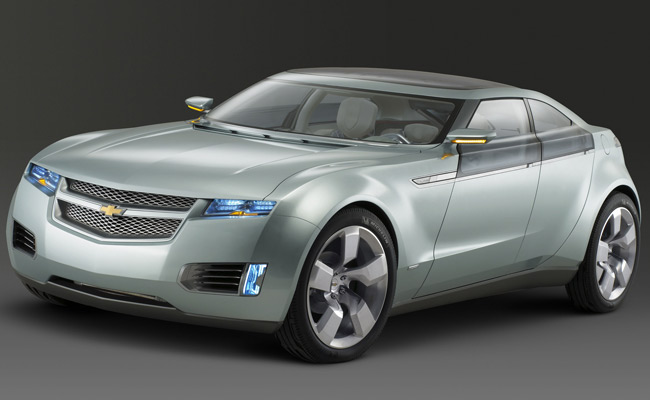Hybrid Car Rebates Don't Work

Rebate programs designed to spur sales of hybrid vehicles don't work as intended, a new study finds.
The people who take advantage of such programs tend to drive fuel-efficient cars already, the researchers found. Other research has found that people with money and a green mindset already aim to buy hybrid cars.
So the stimulated hybrid sales come largely in lieu of other small, fuel-efficient conventional cars, rather than supplanting sales of gas-guzzling SUVs, trucks and vans.
"If the intention of rebate programs is to replace gas guzzlers with hybrids, they are failing," said study co-author Ambarish Chandra, a professor at the University of British Columbia.
Hybrid rebate programs are currently offered by the U.S. federal government (based on the Energy Policy Act of 2005, for hybrids purchased through 2010) and 13 U.S. states. Rebates are active in five Canadian provinces, and the Canadian national government offered hybrid rebates during 2007-2008.
Wrong impact
Aimed at reducing fuel use and emissions, hybrid vehicles combine gas engines and electric motors in a variety of combinations.
Sign up for the Live Science daily newsletter now
Get the world’s most fascinating discoveries delivered straight to your inbox.
Chandra said sales of large vehicles have risen steadily since the introduction of hybrid rebates in the United States and Canada over the years.
"People are choosing hybrids over similarly priced small- and medium-sized conventional cars, which are not far behind hybrids for fuel efficiency and emissions," he said. "The reductions in carbon emissions are therefore not great."
In the United States, many politicians and people on the street have questioned the current "Cash for Clunkers" campaign, which requires purchase of a new car that gets just 4 miles per gallon better than the trade-in, in exchange for a $3,500 rebate. Early indications are the program is stimulating sales of trucks and SUVs as well as cars, though popularity has apparently exhausted the $1 billion fund and the future of the program is uncertain today.
Chandra's colleague Sumeet Gulati, assistant professor in the university's Department of Food and Resource Economics, said their study can't be used to draw conclusions about Cash for Clunkers.
"The environmental aspect of the Cash for Clunkers program is a footnote," Gulati told LiveScience. "The real reason for that program is to revitalize automobile sales."
Motivations clear
The rebate study is not yet published. It was presented at the Western Economic Association Meetings held at Vancouver last month. The conclusions were based on Canadian car purchase data, but the results are thought to apply to U.S. consumer psyche, Chandra and colleagues figure.
"We suggest that this is valid for the U.S. market as there are rebates given by state governments and the federal government that are comparable in size, and the Canadian and U.S. automobile markets are so well integrated," Gulati said.
They found that the majority of consumers who purchase hybrids were not motivated by government rebates.
"Our estimates indicate that two-thirds of people who buy hybrids were going to buy them anyway," Chandra said. "So for the majority, rebates are not changing behavior — they are subsidizing planned purchases."
Canadian provinces that offer rebates have spent an average of $195 per ton of carbon saved, the study concludes. Governments could garner greater environmental benefits by purchasing carbon offsets (currently priced between $3 and $40 per ton on carbon markets) or investing in green jobs and technologies, Chandra said.
Sales remain modest
Sales of hybrids have risen in recent years, but remain modest compared to conventional vehicles.
In environmentally conscious California, for example, fewer than 1 percent of vehicles on the road are hybrids, a recent UCLA study found. However, in San Francisco-area counties where there's both a very green mindset and a fair amount of greenbacks, the figure is 1.74 percent. In very rich areas, the tally is higher: A full 3 percent of vehicles in Santa Monica and Malibu are hybrids.
"There is clear evidence that environmentalists are voting their pocketbook on environmental products," said Matthew E. Kahn, a UCLA professor who led the California study.
Some have also questioned how green hybrids are, since plugging them in draws electricity that's often generated at coal-fired power plants. The environmental impact of the batteries remains in question, too.
Meanwhile, electric-only vehicles are poised to make hybrids obsolete before they gain traction. Nissan, which announced an all-electric vehicle this week, predicts that 10 percent of all cars sold worldwide will be electric by 2020.
In The Water Cooler, Imaginova's Editorial Director Robert Roy Britt looks at what people are talking about in the world of science and beyond. Find more in the archives and on Twitter.
Robert is an independent health and science journalist and writer based in Phoenix, Arizona. He is a former editor-in-chief of Live Science with over 20 years of experience as a reporter and editor. He has worked on websites such as Space.com and Tom's Guide, and is a contributor on Medium, covering how we age and how to optimize the mind and body through time. He has a journalism degree from Humboldt State University in California.










